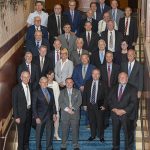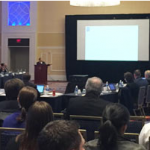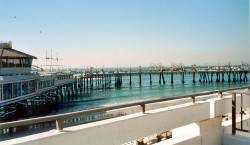The nation’s leading satellite navigation experts have invited Ligado Networks, a firm whose plans are widely viewed by many as a threat to satnav, to present at their November 15 meeting. If the company accepts, it could illuminate the structure of the terrestrial service it has in mind and either ease, or add fuel to, the ongoing dispute between Ligado and the GPS community.
The nation’s leading satellite navigation experts have invited Ligado Networks, a firm whose plans are widely viewed by many as a threat to satnav, to present at their November 15 meeting. If the company accepts, it could illuminate the structure of the terrestrial service it has in mind and either ease, or add fuel to, the ongoing dispute between Ligado and the GPS community.
The October 10 letter from Brad Parkinson to Ligado CEO Doug Smith referred to previous correspondence that, “from its tone" made "clear we still have several communications difficulties." Parkinson is 1st vice chair of the Positioning, Navigation, and Timing (PNT) Advisory Board (PNTAB) and is widely considered to be the father of the GPS system.
"We have strong concerns and take issue with various points raised in Ligado’s recent correspondence to me and to others who are associated with our distinguished group of experts," wrote Parkinson. "However, we believe the most constructive way to move forward is to focus on your willingness to provide the Committee with clear up-to-date design information."
Ligado did not immediately respond to a query from Inside GNSS about whether it would accept the invitation.
The Virginia-based firm is seeking permission from the Federal Communications Commission (FCC) to change the way it uses the satellite frequencies granted to it years ago to also support a ground-based wireless network. Frequency regulators strive to put similar users together to help prevent interference. This request would put a potentially powerful signal in a neighborhood of much weaker satellite signals. Parkinson described allowing higher power in a band near GPS as an "existential threat to GPS." Indeed, tests in 2011 showed the network’s signals would overload GPS receivers. Subsequent test results, and a presentation by Parkinson analyzing Ligado’s revised plan, show that interference remains an issue.
The dispute heated up at the end of June when 22 organizations spanning aviation, weather, academia, and space and signed a letter to the FCC opposing Ligado’s request. The Advisory Board sent a letter July 5 to the co-chairs of the National Executive Committee for Space‐based Positioning, which guides the GPS and other PNT efforts across the country. The letter—addressed to Deputy Secretary of Defense Robert O. Work and Deputy Secretary of Transportation Jeffrey A. Rosen—advised strongly against approving the Ligado proposal.
Though Ligado has modified its plan from the one it originally proposed some seven years ago, the advisory broad said "the revised proposal to the Federal Communications Commission (FCC) is fundamentally unchanged from a previous proposal reviewed in 2011. Extensive government testing in 2011 and in 2016, clearly shows that both proposals cause definitive harmful interference to many classes of GPS receivers."
The PNTAB has invited the firm to give its perspective before and Ligado, its predecessor LightSquared and colleagues have presented five times, Parkinson said. Indeed NASCTN, that is the National Advanced Spectrum and Communications Test Network, presented its results at the June 2017 meeting. That organization, which is affiliated with the National Institute of Standards and Technology (NIST), was hired by Ligado to develop tests capable of discerning interference—though Ligado has tried to spin the work as something broader.
While many issues have been discussed during those presentations, the structure of the system remains unclear. Ligado’s predecessor company envisioned a nationwide network with some 30,000 ground stations providing wholesale broadband capacity for phones and other wireless devices. More recently Ligado has been suggesting it could provide connectivity to driverless cars, drones and other Internet of Things devices. Given that, how might the system as now envisioned be deployed? How many ground terminals are needed, for example, and where would they be?
Parkinson asked in his letter that Ligado discuss its plans in its presentation and describe how it hopes to use the frequencies. One key issue that remains unclear is how the firm plans to address the large number of already-installed GPS receivers—some of which are essential to the nation’s critical infrastructure. No one knows for sure how many receivers there are or where they are because, as with FM radios, you don’t need to subscribe to a GPS service to use GPS.
There are also concerns about how GPS services would be able to continue to evolve if the Ligado network were allowed to operate as proposed. In his presentation Parkinson proposed test plan criteria to help understand these issues better—and Ligado’s test plan is what, he said, he’d like to hear about.
"Most, if not all, of the technical issues you have raised have been publicly discussed by the PNTAB on numerous occasions over the course of several years. At this upcoming meeting, we would therefore encourage you to specifically describe your implementation plan, with a corresponding test plan addressing the issues we have openly raised. We request you specifically focus on those regarding the potential for interfering with any GPS/GNSS services that operate in the protected Space-to-Earth L band (1559 – 1610 MHz). Included should be all modes of operation and the use of all current and future GNSS signals. Without these specific technical details and corresponding evaluations, we can only conjecture as to what you are really proposing. In particular we must consider the ramifications of them, and any attendant, unacceptable risks to public welfare."






